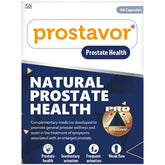Hip dysplasia
Hip dysplasia, also known as developmental dysplasia of the hip (DDH), is a condition where the hip socket (acetabulum) does not fully cover the ball portion (femoral head) of the upper thighbone. This misalignment can cause the hip joint to be dislocated or easily dislocatable. Hip dysplasia can be present at birth (congenital) or develop during early childhood.
Symptoms
Symptoms of hip dysplasia vary with age and the severity of the condition:
-
Infants:
- Limited range of motion in one or both hips.
- Asymmetrical thigh or buttock creases.
- Clicking or popping sound when moving the hip.
- One leg may appear shorter than the other.
-
Children:
- Limping or an abnormal gait.
- Pain in the hip or groin area.
- Difficulty in activities requiring hip movement.
-
Adolescents and Adults:
- Chronic hip pain.
- Early onset of osteoarthritis.
- Hip instability or a sensation of the hip "giving out."
Causes
The exact cause of hip dysplasia is not known, but several factors can contribute to its development:
- Genetics: A family history of hip dysplasia increases the risk.
- Breech Birth: Babies born in the breech position are at higher risk.
- Firstborn Child: Firstborns are more likely to develop hip dysplasia.
- Female Gender: Girls are more commonly affected than boys.
- Swaddling Practices: Improper swaddling that restricts hip movement can contribute to the condition.
Risk Factors
Certain risk factors can increase the likelihood of developing hip dysplasia:
- Family History: A parent or sibling with hip dysplasia.
- Birth Conditions: Breech birth or oligohydramnios (low amniotic fluid).
- Infant Positioning: Tight swaddling or improper carrying techniques.
Diagnosis
Diagnosis of hip dysplasia involves:
- Physical Examination: The doctor checks for hip stability, asymmetry in leg length, and thigh creases.
-
Imaging Tests:
- Ultrasound: Used for infants to visualize the hip joint.
- X-rays: Typically used for older children and adults to assess hip alignment and joint damage.
Treatment
Treatment for hip dysplasia depends on the child's age and the severity of the condition:
-
Infants:
- Pavlik Harness: A soft brace that holds the baby's hips in the correct position to promote proper development.
- Closed Reduction: If the harness is ineffective, the hip may be manually positioned in the socket under anesthesia, followed by a spica cast to maintain alignment.
-
Children:
- Bracing: Continued use of braces or casting to correct hip positioning.
- Open Reduction Surgery: Surgical procedure to correct severe dislocations or when other treatments have failed.
-
Adolescents and Adults:
- Periacetabular Osteotomy (PAO): Surgery to reorient the hip socket to provide better coverage for the femoral head.
- Hip Replacement: In cases of severe arthritis or joint damage, a total hip replacement may be necessary.
Prevention
While hip dysplasia cannot always be prevented, certain measures can reduce the risk:
- Proper Swaddling: Allowing enough room for the baby's hips to move.
- Healthy Pregnancy Practices: Regular prenatal care and avoiding risk factors associated with breech birth.
- Regular Check-Ups: Monitoring hip development during well-baby visits.
Complications
If left untreated, hip dysplasia can lead to several complications:
- Osteoarthritis: Early onset of arthritis due to abnormal wear and tear on the hip joint.
- Chronic Pain: Persistent hip pain affecting daily activities and quality of life.
- Hip Instability: Increased risk of hip dislocation or subluxation.
- Mobility Issues: Difficulty in walking or performing physical activities.
When to See a Doctor
Seek medical attention if you notice:
- Asymmetrical leg lengths or thigh creases in your baby.
- Clicking or popping sounds from your child's hip.
- Limping or an abnormal gait in older children.
- Persistent hip pain in adolescents or adults.
Conclusion
Hip dysplasia is a condition that requires early detection and appropriate treatment to ensure proper hip development and prevent complications. Regular check-ups, proper infant care practices, and timely medical interventions can significantly improve outcomes for individuals with hip dysplasia. If you suspect any issues with your or your child's hip development, consult a healthcare provider for evaluation and guidance on the best course of action.
- Complication of Hip dysplasia
- Diagnosis of Hip dysplasia
- Hip dysplasia
- Hip dysplasia myths
- How is Hip dysplasia treated?
- Medicine for Hip dysplasia
- Remedies for Hip dysplasia
- Support for Hip dysplasia
- Symptoms associated with Hip dysplasia
- The best British Online Pharmacy
- Top 10 UK Pharmacies
- Treatment for Hip dysplasia
- What causes Hip dysplasia
- What is Hip dysplasia
- Where can I buy medicine for Hip dysplasia in the UK
- ZimSeller Pharmacy



















